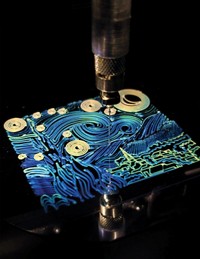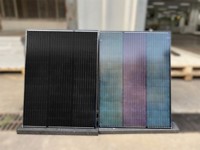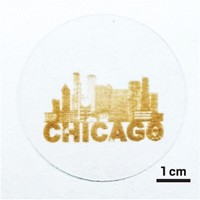Advertisement
Grab your lab coat. Let's get started
Welcome!
Welcome!
Create an account below to get 6 C&EN articles per month, receive newsletters and more - all free.
It seems this is your first time logging in online. Please enter the following information to continue.
As an ACS member you automatically get access to this site. All we need is few more details to create your reading experience.
Not you? Sign in with a different account.
Not you? Sign in with a different account.
ERROR 1
ERROR 1
ERROR 2
ERROR 2
ERROR 2
ERROR 2
ERROR 2
Password and Confirm password must match.
If you have an ACS member number, please enter it here so we can link this account to your membership. (optional)
ERROR 2
ACS values your privacy. By submitting your information, you are gaining access to C&EN and subscribing to our weekly newsletter. We use the information you provide to make your reading experience better, and we will never sell your data to third party members.
Materials
Synthetic Melanin Films Mimic Colors In Bird Feathers
Biomimetics: Nanoparticles of polydopamine self-assemble to form colored films
by Jyoti Madhusoodanan
May 22, 2015

The bright hues of some birds’ wings and beetles’ backs arise from what’s known as structural color—light-reflecting patterns formed by the orderly arrangement of nanoparticles containing the pigment melanin. Now, by using nanosized spheres of synthetic melanin, scientists have created films that come a step closer to mimicking the pure blues, greens, and reds found in many avian feathers (ACS Nano 2015, DOI: 10.1021/acsnano.5b01298). Such colored films could be used in optical sensors, fade-resistant paints, or ultraviolet-protective coatings.


Structural colors are widespread in nature, and many are produced by melanin-containing nanostructures known as melanosomes. These nanostructures form patterns that reflect very specific wavelengths of light, while the dark-colored melanin pigment within them absorbs stray wavelengths of incident light, so that they produce pure colors. And because the pigments do not produce these hues directly, these colors resist fading. Previously, scientists have tried to make structural colors using polymer particles. Although such particles can reflect specific wavelengths of light, they are not as effective at sponging up other colors. So to make synthetic structural colors, researchers needed to mix in additional substances, such as carbon particles, to boost absorption and improve hues.
To solve this problem, Nathan C. Gianneschi of the University of California, San Diego; Matthew D. Shawkey and Ali Dhinojwala of the University of Akron, in Ohio; and their colleagues made nanoparticles out of polydopamine, a synthetic melanin, which performs both functions effectively. “Instead of having two components to mix, you have one component,” says Richard O. Prum of Yale University, who was not involved in the study. “That’s innovative and really cool.”
The researchers polymerized dopamine to form nanospheres about 150 nm in diameter. They suspended these nanoparticles in water to form colloids then dried them on silicon wafers to produce colored layers that spanned the spectrum from blue to red. The thickness of the film changes the color, and the team changed the speed of evaporation, concentration of the particles, or humidity to achieve specific hues. The films reflected a narrow range of wavelengths while absorbing others. In red films, for example, 95% of the reflected light was in the 600 to 700 nm region.
Creating particles that had a fairly uniform size and shape was key to the process, says Gianneschi. “Moving forward, we want to control these processes better so that we can re-create many different shapes that mimic natural melanosomes, including rods and hollow spheres.”
The 1-cm2 films created in this study varied in color because the team can only maintain uniform thicknesses over about a square millimeter. To create larger surfaces with consistent colors, the researchers will need to use other methods, such as spin-coating, or tweak the evaporation process.
Since structural colors are formed by different arrangements of nanoparticles, the wavelengths they reflect can be easily changed by separating the particles or squishing them into a new pattern, Shawkey says. “You could have a coating or paint that changes color with exposure to certain environments or a specific wavelength.” Being able to mimic melanin will also help biologists understand how nanostructures form iridescent colors in feathers, eggshells, or insect wings, he adds.





Join the conversation
Contact the reporter
Submit a Letter to the Editor for publication
Engage with us on Twitter